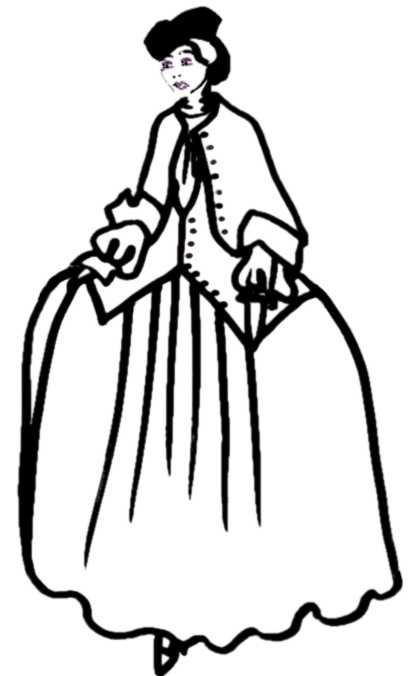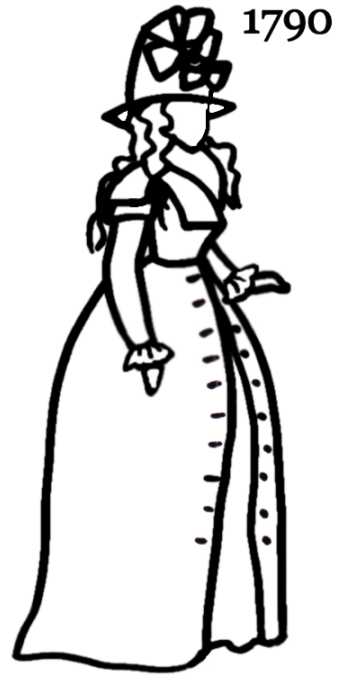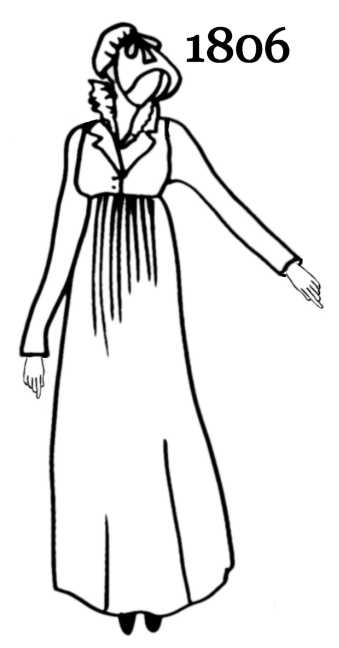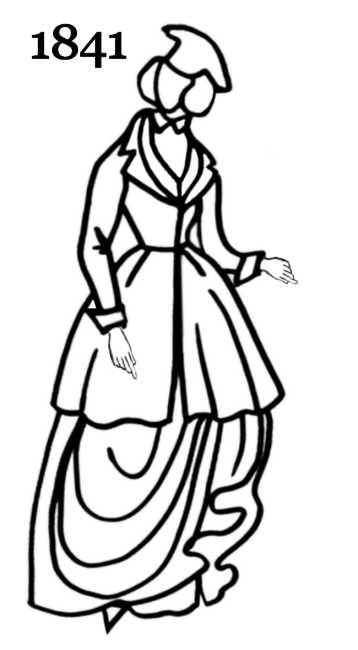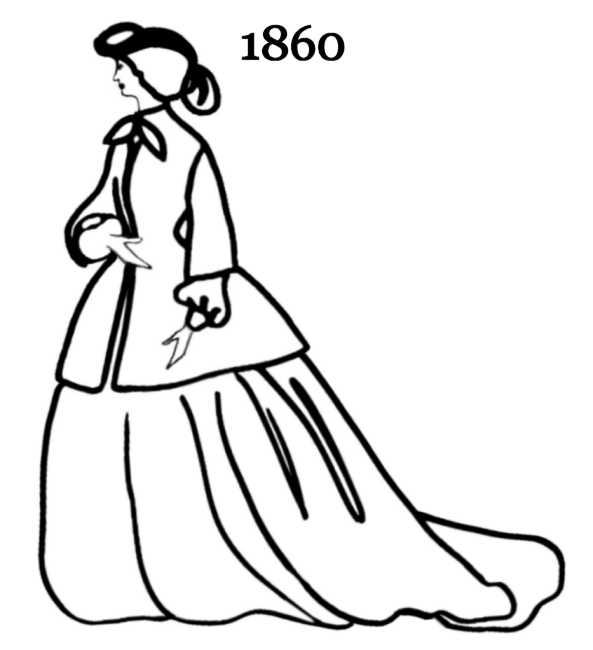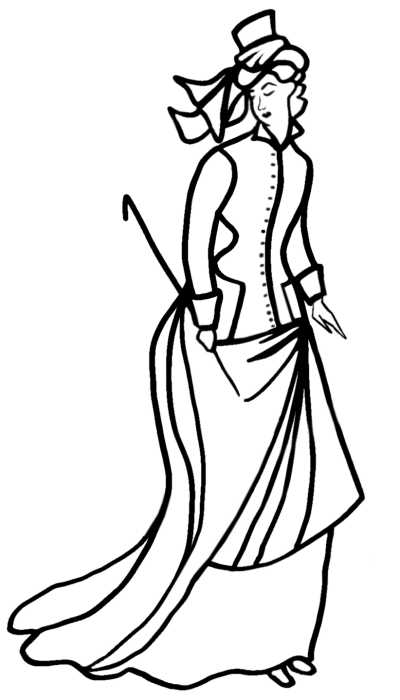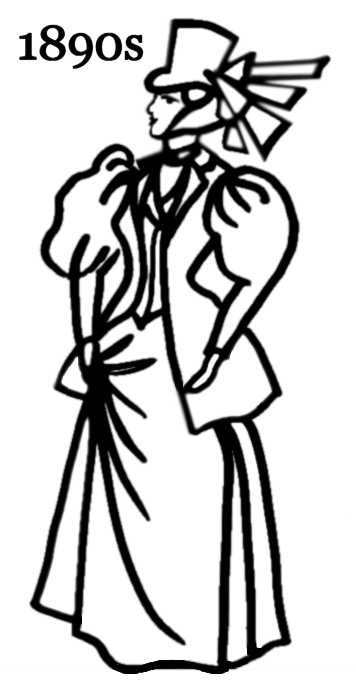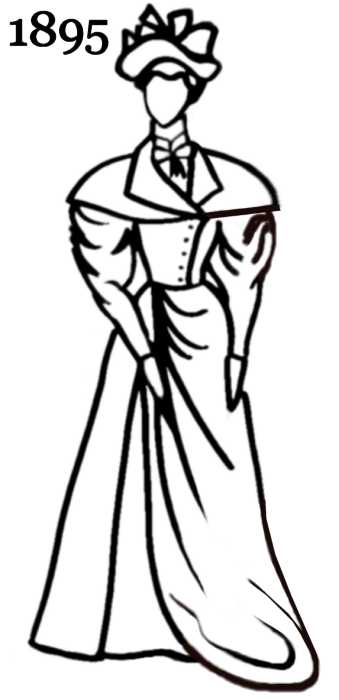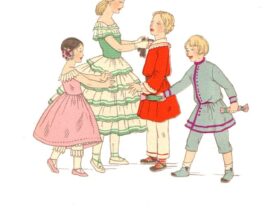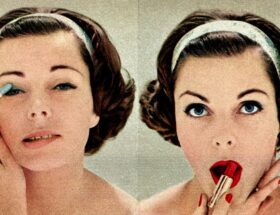By Pauline Weston Thomas for Fashion-Era.com
From the mid 1700s British village woman mostly wore hooded cloaks for outdoor wear. Riding dress used tailoring in coat making. Even by 1800 few women wore the highly tailored top coats known as the redingote.
At the turn of 1800 the art of tailoring was only just developing into a fitted, contoured, make the best of the body style we recognize today.
Below I show a selection of line drawings and pictures illustrating redingotes and riding dresses to the end of the Victorian era until the coat itself became a fashion garment in its own right and was usually referred to as a redingote, whereas riding dress had changed to a shorter jacket and side saddle skirt or riding breeches.
Forest green, black, and red were all colors used for riding dresses.
Redingote Pictures


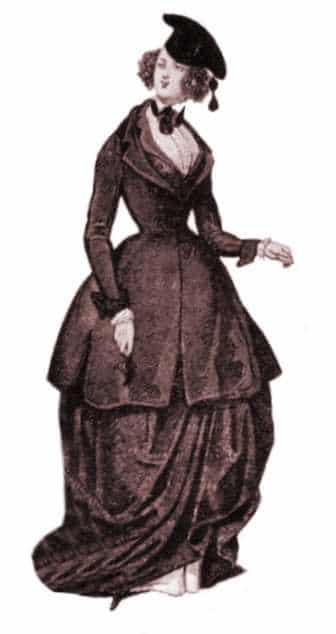
Early redingotes appeared in the late 1780s and were versatile enveloping full-length overcoats. The English redingote was made of good woollen cloth and was generally lightweight, but it also had shoulder capes and buttoned across the chest.
It was popular in many forms through the 19th century and basically began life as an outdoor riding coat for inclement weather. The caped redingote was a very suitable garment for wearing in rainy weather because the layers of capes provide extra shoulder protection.
A similar technique of using a back half yoke sometimes just at the back, but often also on the front is still added to raincoats today and provides an extra fabric layer at the front chest and at the back shoulder blades level.
Such extra layering helps prevent the wearer from feeling soaked in a rain downpour.
Redingotes were used alongside mantles and cloaks for everyday wear often because they were practical, utilitarian, unfussy and unnoticeable compared to more ostentatious lavishly trimmed clothes. They were of course also used for riding.


In America when some women did men's work on farms and estates they often abandoned side saddle riding for practical reasons. Being more forward looking and less hidebound by the the then existing British etiquette of dress American women borrowed from male dress and often adopted trousers and a riding habit and skirt.
1860 Riding Habit

In England where side saddle riding for women remained popular for many years full skirted redingotes with excess fabric skirts were worn to elegantly cover the legs from view. They often also covered trousers hidden well beneath the layers, but perfect if the lady fell of her horse. Respectability was all!
Riding Habits of 1863
Trousers Worn Beneath
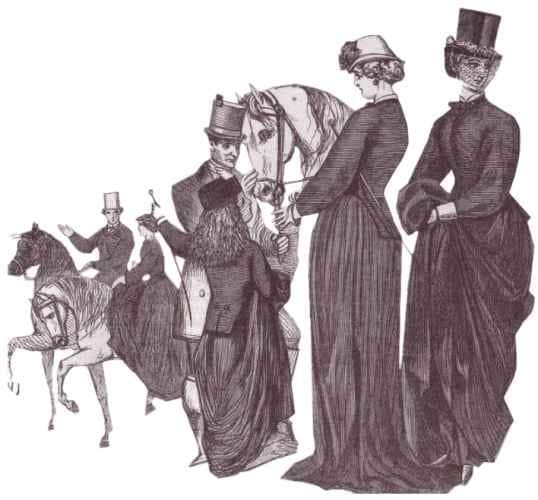
The riding dress of the 19th century followed the huge gigot and leg of mutton sleeve styles of both the 1830s and the mid 1890s.
In the latter era skirts though became a bit more practical with fullness, but without trails of fabric. Ironically the fashion for tailor made suits actually followed the severe lines of these tailored riding habits.


These line drawings on the next page show how the redingote silhouette changed over the years.
These simple line drawings I made below show how the redingote silhouette changed over the years from the eighteenth century to the twentieth century.
These line drawings are ideal for school use for coloring in pictures and may be downloaded for school use only. They must not be reproduced on other websites.
I will be adding more line drawings as time permits.
Timeline of Riding Dress/ Redingote
